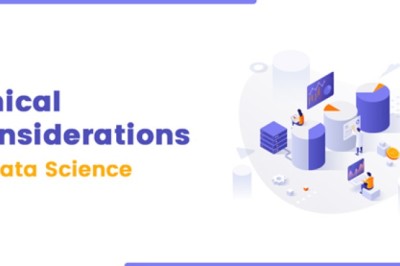views
How well do you understand depressant drugs? Despite the name, these are not necessarily drugs prescribed for people with depression. In fact, these drugs come in various forms, including some that might surprise you, especially when it comes to their potential dangers. Here’s a look at the dangers and varieties of depressant drugs.
Depressants Suppress the Central Nervous System
The first step to understanding depressant drugs is defining what they are. “Depressants” is short for central nervous system depressants (CNS depressants). These medications get their name from how they work in the body. They suppress central nervous system activity and create relaxing and anti-anxiety effects. If you are wondering if various kinds of drugs do this, the answer is yes. In fact, drugs that fall into this category include sedatives, tranquilizers, and hypnotics.
If this category of drugs doesn’t ring a bell, it also includes benzodiazepines, opioids, sleeping pills, and alcohol, which you may be familiar with. With such a wide variety of drugs in this category, it’s easy to see how prevalent depressant drugs are worldwide. If you aren’t using any of these depressant drugs, you probably know someone who does. Because of that, it helps to know how these drugs work and what makes them so potentially dangerous.
Benzos and Sleeping Pills
Benzodiazepines are prescribed for various conditions, including anxiety, insomnia, seizures, and muscle spasms. Because the drugs work in multiple applications, they have quickly earned a status as one of the most prescribed medications on the market. But because of their widespread use, they have infamously become one of the most widely abused drugs as well. Many different benzos are on the market, but a popular one is Xanax (alprazolam), which treats anxiety and panic disorders. Like other benzos, Xanax mimics a neurotransmitter in the brain by blocking nerve signals that send feelings of anxiety while producing relaxation. Because this suppresses the brain’s normal functioning, the body can quickly become dependent on the drug. This makes for very dangerous addiction symptoms, including memory problems, depression, confusion, and an increased risk of Alzheimer’s.
While benzos are one type of sedative, non-benzo sedatives like Ambien are also CNS depressants. While these drugs work similarly to benzos, they were developed to address the widespread benzo abuse. While non-benzo sedatives, such as Ambien, are arguably less dangerous than benzos, they can adversely affect the central nervous system. Probably the most widely known side effect is how non-benzo drugs can affect memory.
Ambien is known for causing intoxicating symptoms, hallucinations, amnesia, and lack of oxygen due to respiratory depression. Many people have been arrested for crimes they don’t remember committing while under the drug’s influence. Some have even operated a vehicle in a sedative-like state after taking the medication. All of this happens because the drug suppresses the central nervous system, effectively rewiring how the brain works.
Opioids
Opioid abuse has reached epidemic levels in the U.S. in recent years and remains a threat today. One reason is because of one of the most dangerous drugs on the streets: fentanyl. Fentanyl’s potency makes it a highly dangerous CNS depressant. It only takes 2 mg to 3 mg of the opioid to kill someone. By comparison, the drug is 100 times more potent than morphine and 50 times more potent than heroin.
But this is only half the danger. What makes fentanyl especially dangerous is its illicit use in drug cutting. Marijuana, cocaine, and other opioids are frequently cut with fentanyl so that dealers can sell a much more potent (and addictive) drug to unsuspecting people. However, fentanyl use can produce deadly results. Between May 2020 to April 2021, 64% of the 100,000 estimated drug deaths that occurred in the U.S. involved an overdose involving illegally made fentanyl or another synthetic opioid, per the Centers for Disease Control and Prevention (CDC). Fentanyl is potent enough on its own, but mixing the drug with other substances, especially other CNS depressants, can push the body beyond its limits. Unfortunately, this is happening in record numbers today.
The Danger of Mixing Substances
People who abuse depressants are at a higher risk of injury or death when they mix them with other substances. However, people can combine them by accident. As mentioned earlier, alcohol is a CNS depressant. Many people who drink alcohol, however, are not aware of this. While they might not use these drugs recreationally, they could drink alcohol after taking a prescription CNS depressant, not realizing why this is risky. If someone has an alcohol addiction, the risk of an overdose is even higher, even when taking the prescribed amount of a pill.
When a drug’s depressant effects combine with alcohol, an overdose could occur, creating a very dangerous situation. Understanding these depressant drugs can go a long way in seeing how dangerous they can be and how easy it is to mix them. Generally, you should avoid mixing any type of drug with alcohol. If you take depressant medication and drink alcohol in any capacity, you should talk about this with your doctor.
Because depressants cross over into so many different categories, the risk of overdose is high. However, knowing this information can go a long way in protecting ourselves and others from these drugs’ dangers. It can also help us understand how important it is to seek professional help if we find ourselves dependent on or addicted to a depressant drug.
Sources
Delphi Health Group. (n.d.). Dangers of Mixing Alcohol With Ambien. Retrieved https://delphihealthgroup.com/alcohol/mixing-with-ambien/
NIH. (n.d.). Definition of Depressant Drugs. Retrieved https://www.cancer.gov/publications/dictionaries/cancer-terms/def/cns-depressant
Delphi Health Group. (n.d.). Guide to Benzodiazepine Addiction and Treatment. Retrieved https://delphihealthgroup.com/benzodiazepines/
DEA. (2020 April). Drug Fact Sheet: Benzodiazepines. Retrieved https://www.dea.gov/sites/default/files/2020-06/Benzodiazepenes-2020_1.pdf
Harvard Health. (2014 Sep.). Benzodiazepine use may raise risk of Alzheimer’s disease. Retrieved https://www.health.harvard.edu/blog/benzodiazepine-use-may-raise-risk-alzheimers-disease-201409107397
Delphi Health Group. (n.d.). Sedative Addiction. Retrieved https://delphihealthgroup.com/sedatives/
Delphi Health Group. (n.d.). Ambien Addiction Guide. Retrieved https://delphihealthgroup.com/sedatives/ambien/
FDA (2008, Feb.). Ambien FDA Approved Labeling. Retrieved https://www.accessdata.fda.gov/drugsatfda_docs/label/2008/019908s027lbl.pdf
CBS Boston. (2022, Jun 1). Man charged with groping 2 women on flight from Los Angeles to Boston. Retrieved https://www.cbsnews.com/boston/news/california-man-charged-groping-women-flight-boston/
Healthline. (2019, June 29). Lunesta vs. Ambien: Two Short-Term Treatments for Insomnia. Retrieved https://www.healthline.com/health/healthy-sleep/lunesta-vs-ambien
Delphi Health Group. (n.d.). Opioid Addiction and Treatment. Retrieved https://delphihealthgroup.com/opioids/
Delphi Health Group, (n.d.). Fentanyl Addiction: What Side Effects Should You Know About? Retrieved https://delphihealthgroup.com/opioids/fentanyl/
LA County Public Health. (2019 June). What is Fentanyl? Retrieved http://www.publichealth.lacounty.gov/sapc/managepainsafely/docs/Fentanyl%20FINAL.pdf?pdf=fentanyl#:~:text=What%20is%20Fentanyl%3F-,Fentanyl%20is%20a%20powerful%20synthetic%20opioid%20that%20is%20up%20to,times%20made%20and%20used%20illegally.
UMass Chan Medical School. (2022 May 10). What is Fentanyl and Why is it Behind the Deadly Surge in US Drug Overdoses? Retrieved https://www.umassmed.edu/news/news-archives/2022/05/what-is-fentanyl-and-why-is-it-behind-the-deadly-surge-in-us-drug-overdoses/
Delphi Health Group. (n.d.). Alcohol Addiction and Treatment Guide. Retrieved https://delphihealthgroup.com/alcohol/
Centers for Disease Control and Prevention. (2021, December 16). Trends in and characteristics of drug overdose deaths involving illicitly manufactured Fentanyls - United States, 2019–2020. Centers for Disease Control and Prevention. Retrieved https://www.cdc.gov/mmwr/volumes/70/wr/mm7050e3.htm?s_cid=mm7050e3_w
























Comments
0 comment